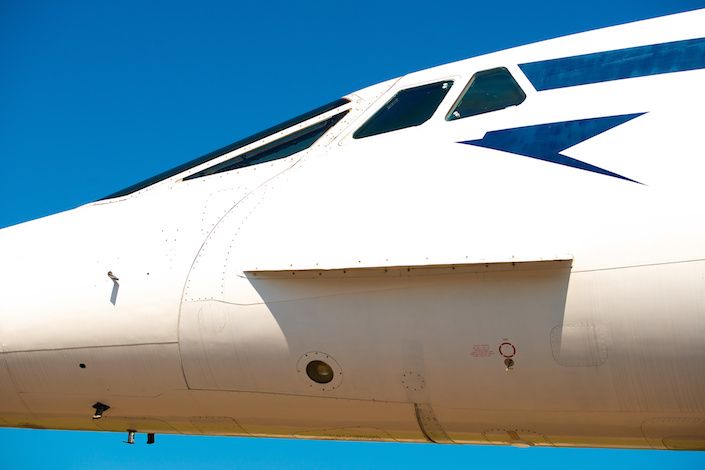Where travel agents earn, learn and save!
News / In Photos: How Concorde ended up on a museum roof in Germany
Most examples of Concorde have been preserved at airports and museums worldwide and one of the aircrafts is on display at the Technik Museum Sinsheim, in the German state of Baden-Württemberg

Being such an iconic aircraft, most examples of Concorde have been preserved at airports and museums worldwide. Indeed, 18 of the 20 delta-winged supersonic airliners remain intact today. One of these is on display at the Technik Museum Sinsheim, in the German state of Baden-Württemberg. It sits on the museum’s roof, but how did it get there?
The aircraft in question
Let’s start by taking a look at the life and times of the aircraft that now sits on Technik Museum Sinsheim’s roof. Registered as F-BVFB, data from ch-aviation.com shows that this example of the iconic supersonic jet first flew in March 1976. According to ATDB.aero, it then entered service with Air France a month later, and accrued a total of 14,771 flight hours.
While Air France owned F-BVFB for its entire career, the aircraft was one of several to briefly operate on lease for US carrier Braniff. It did so from January 1979 to June 1980, during which time it bore the registration N94FB. When Air France withdrew its Concordes, Technik Museum Sinsheim purchased F-BVFB for a token sum of €1.
A complex journey
Buying Concorde was one thing for the museum, but getting it there was another matter altogether. Its journey from Paris to Sinsheim was long and complex, and began with a flight to Karlsruhe/Baden-Baden Airport. This took place on June 24th, 2003, and was the plane’s final airborne journey. Here, it had its wings, tail, and engines removed for transit.
Simple Flying explored earlier this year how complicated moving an aircraft by road can be. With the airport being some 98 km (61 miles) away by road, river transport was chosen as a less disruptive option. As seen in the picture at the top of the article, this saw F-BVFB loaded onto a barge to travel along the Rhine, which passes the airport.
Having come as far as it could by river, F-BVFB had to complete the final leg of its journey by road. This was a challenge, as the museum explains that, even with its wings partially removed, the jet was still 14.45 meters wide. As such, the mighty jet needed a special tip-up low-loader lorry to safely “clear the bridge over the autobahn at the museum.”
Including disassembly time, its journey took nearly a month. Having flown to Baden-Baden on June 24th, 2003, it began its road-based leg on July 19th that year. It traveled overnight along a closed motorway, which thousands of enthusiasts lined to watch the iconic aircraft’s procession. It was then re-assembled on arrival in Sinsheim.
On display with its competitor
Although F-BVFB arrived in Sinsheim in July 2003, it didn’t take up its current position until March 2004. Using multiple cranes, the museum placed the now re-assembled aircraft on its roof, where several planes remain on display today. Rather aptly, it ended up next to none other than its former Soviet-era supersonic competitor, the Tupolev Tu-144.
Today, museum visitors can enjoy access to the aircraft’s passenger cabin, as well as a view of its cockpit. The museum describes F-BVFB as “the highlight of [its] aircraft collection,” and, situated high in the sky above Sinsheim, it makes for a very impressive sight indeed.











